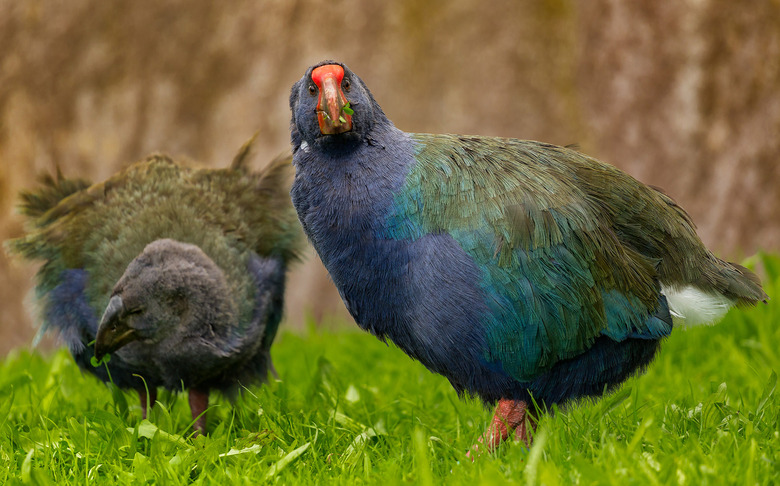Prehistoric Takahe Birds Were Thought To Be Extinct, But They've Returned To The Wild
Believed to have existed since ancient times, the prehistoric Takahe birds of New Zealand have become a success story for conservation. The birds, which were declared extinct in 1898, have now begun to see their numbers surge again, with the recent release of 18 more Takahe birds in Lake Whakatipu Waimāori Valley on New Zealand's South Island.
The number of Takahe birds in New Zealand had been drastically reduced after the introduction of cats, ferrets, stoats, and rats by European settlers. However, in 1948, a full 50 years after the Takahe had been declared extinct, conservationists discovered a small population of the birds. From there, efforts to regrow the population began.
At the start, researchers and conservationists focused on collecting and carefully incubating Takahe eggs. This was done in an attempt to shield the eggs from predators, and as they hatched, they were fed and nurtured very carefully, with the workers wearing sock puppets that resembled the unique red beaks the Takahe birds sport.
Lovely to see this handsome new takahē couple join @Wellington_NZ predator free bird sanctuary @ZEALANDIA. 3 yr old Waitaa and 6 yr old male Bendigo join takahē Neo and Orbell at the sanctuary, after arriving by air from the Burwood Takahē Breeding Centre in @TeAnauNZ @docgovtnz pic.twitter.com/ODbjdsQPfR
— Wendy Hinton (@HintonWendyNZ) August 29, 2023
These steps played a crucial role in helping to raise the population of the Takahe birds in New Zealand. Today, that population has grown to almost 500, with conservationists still working to increase the number of birds found in the area. They've also taken proactive steps to cut down on predators in the area, including trapping stoats, ferrets, and feral cats.
The conservationists say that maintaining a low predator number is important to ensuring the Takahe birds continue to flourish, and their population continues to grow. These unique, flightless birds are known for their round appearance. The conservationists hope to release another seven of the Takahe birds in October, with ten more hopefully being released early next year.
How well these birds continue to do will rely heavily on the conservationists remaining vigilant, and the decades of dedicated work to this once-extinct species have no doubt shown just how successful conservation efforts can be. Other efforts are also being undertaken to revive the Woolly Mammoth and other extinct species of animals.
